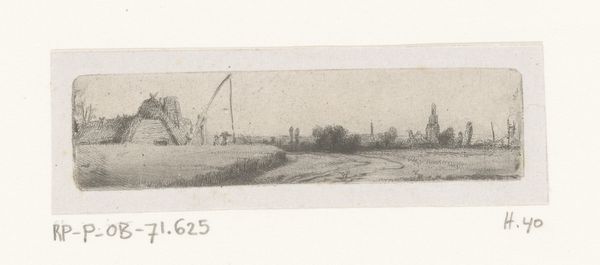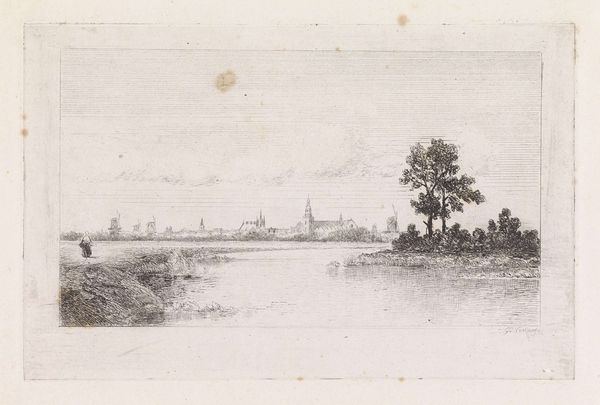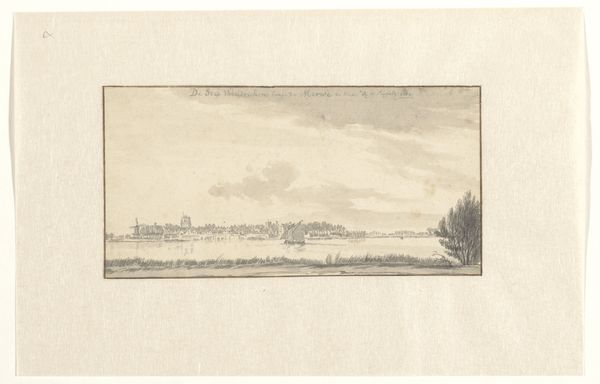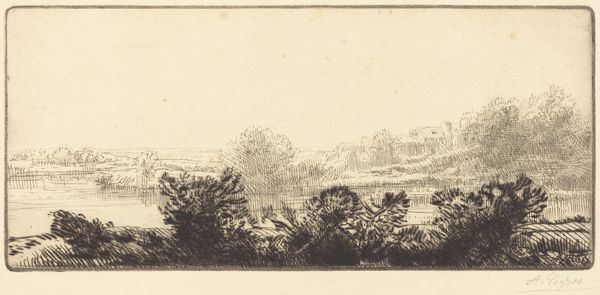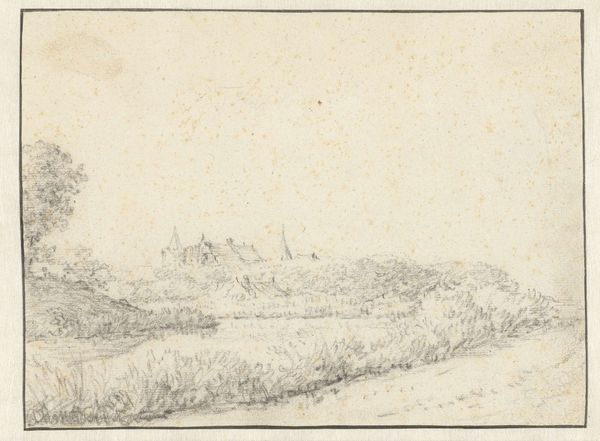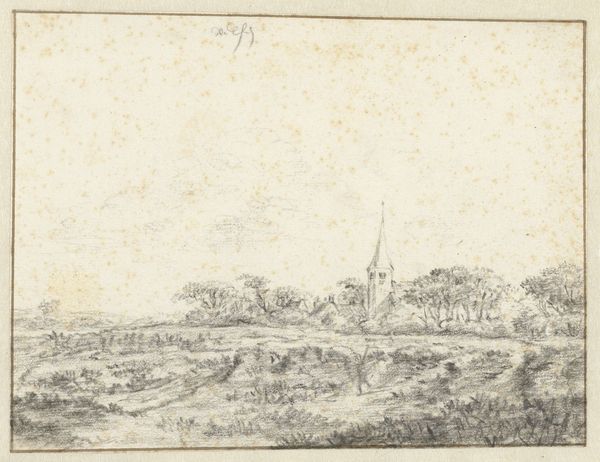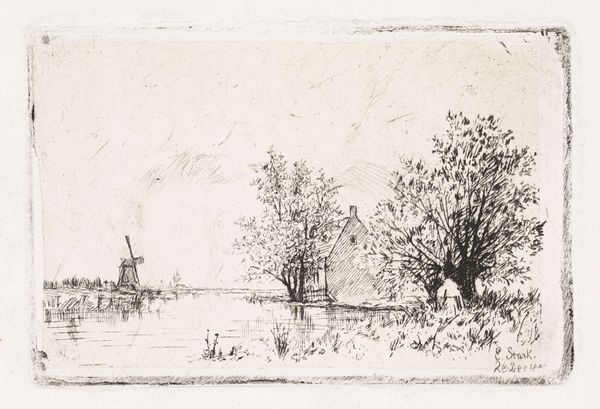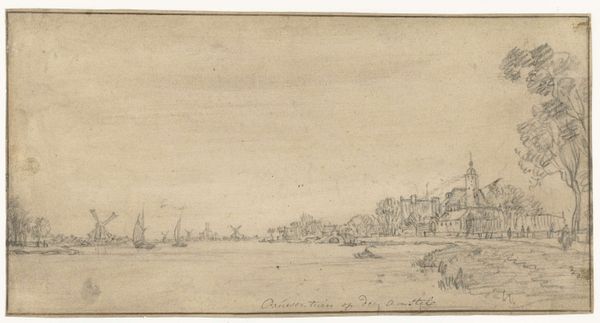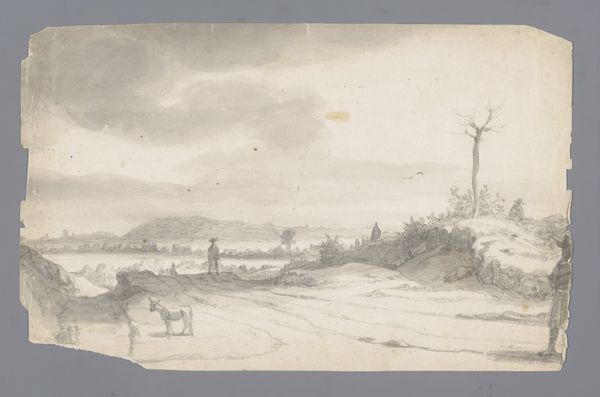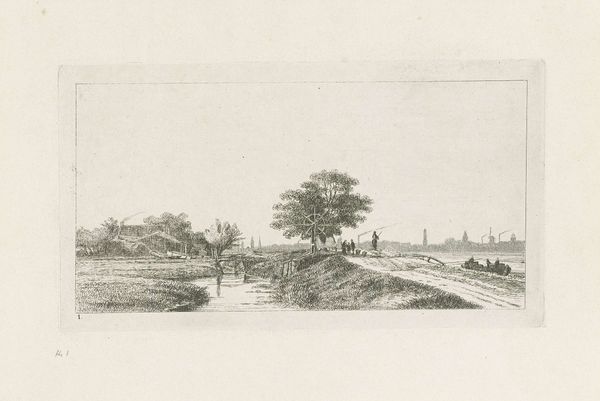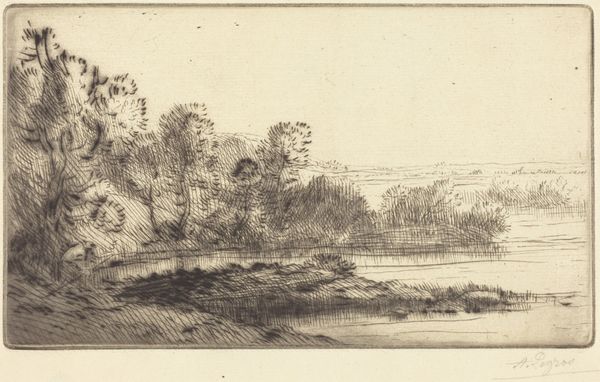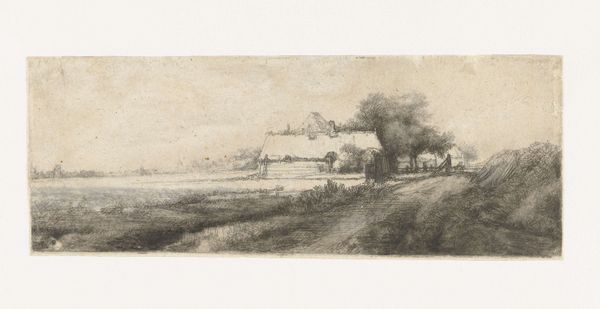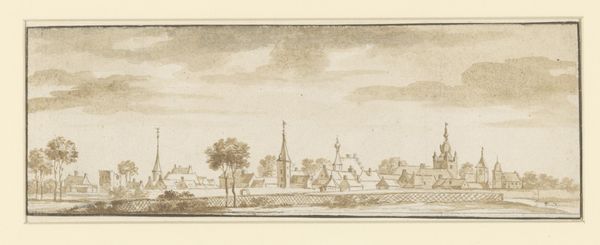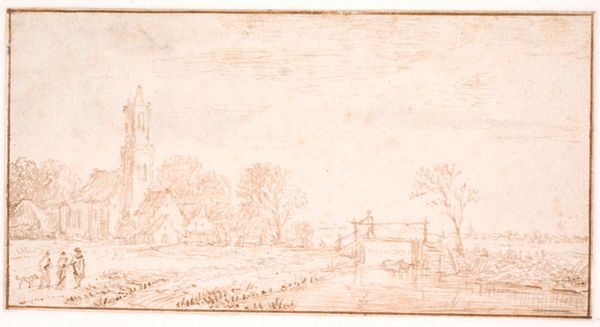
Small Landscape with Distant Village 1774 - 1789
0:00
0:00
print, etching
# print
#
etching
#
landscape
Dimensions: 7/8 x 3 7/16 in. (2.2 x 8.8 cm) (image)1 5/16 x 4 1/8 in. (3.4 x 10.45 cm) (sheet)
Copyright: Public Domain
Curator: Here we have Jean-Pierre Norblin de la Gourdaine's "Small Landscape with Distant Village," created sometime between 1774 and 1789. It's a delicate etching. Editor: It’s almost ethereal, a fleeting moment captured. The scene feels expansive despite its diminutive size; I am immediately drawn into that muted landscape. Curator: Etchings allowed artists to circulate images widely. In Norblin's case, he catered to a growing market for picturesque views. He moved in intellectual and aristocratic circles. Editor: Do you think he intentionally mutes the social realities that underpin rural life? There's no trace of labour, of the difficult realities of village existence here. It all seems a bit idealised, romanticised maybe? Curator: Possibly. Norblin often portrayed everyday life, but often tailored those portrayals for consumption by specific audiences. Land ownership and class were certainly present realities. This is landscape intended to be decorative and unchallenging. Editor: Right. Looking at the composition—the way that slightly curving road leads the eye toward that distant steeple... The soft lines make me wonder about accessibility to religious structures to folks living in those communities at the time? Did peasants feel welcomed? Curator: The church was a central point of control, socially and politically as much as spiritually. We see that power reflected here in the way it anchors the landscape. Even at a distance, the eye goes directly to it. Editor: It's fascinating how this small etching encapsulates those complex social dynamics within what seems a simple, unassuming landscape. These rural representations often neglect so many social details in order to appear more serene and digestible, even though so much was at stake in these very settings at the time. Curator: It shows how landscapes were carefully constructed and meant to be consumed. Looking through Norblin’s world offers such glimpses. Editor: Absolutely. These seemingly quiet landscapes speak volumes when we consider who had the power to shape their narrative.
Comments
minneapolisinstituteofart almost 2 years ago
⋮
Jean-Pierre Norblin de la Gourdaine was a French painter and printmaker active in Poland in the late 18th century. Norblin's charming miniature etchings, representing mostly male heads, street sellers, and vagabonds, reflect both in subject and technique the profound influence of Rembrandt's prints. Norblin was also drawn to Polish subjects, capturing the unfamiliar, exotic world around him in his depictions of men with colossal fur hats and curled moustaches, Cossacks, and Polish historical figures.
Join the conversation
Join millions of artists and users on Artera today and experience the ultimate creative platform.
